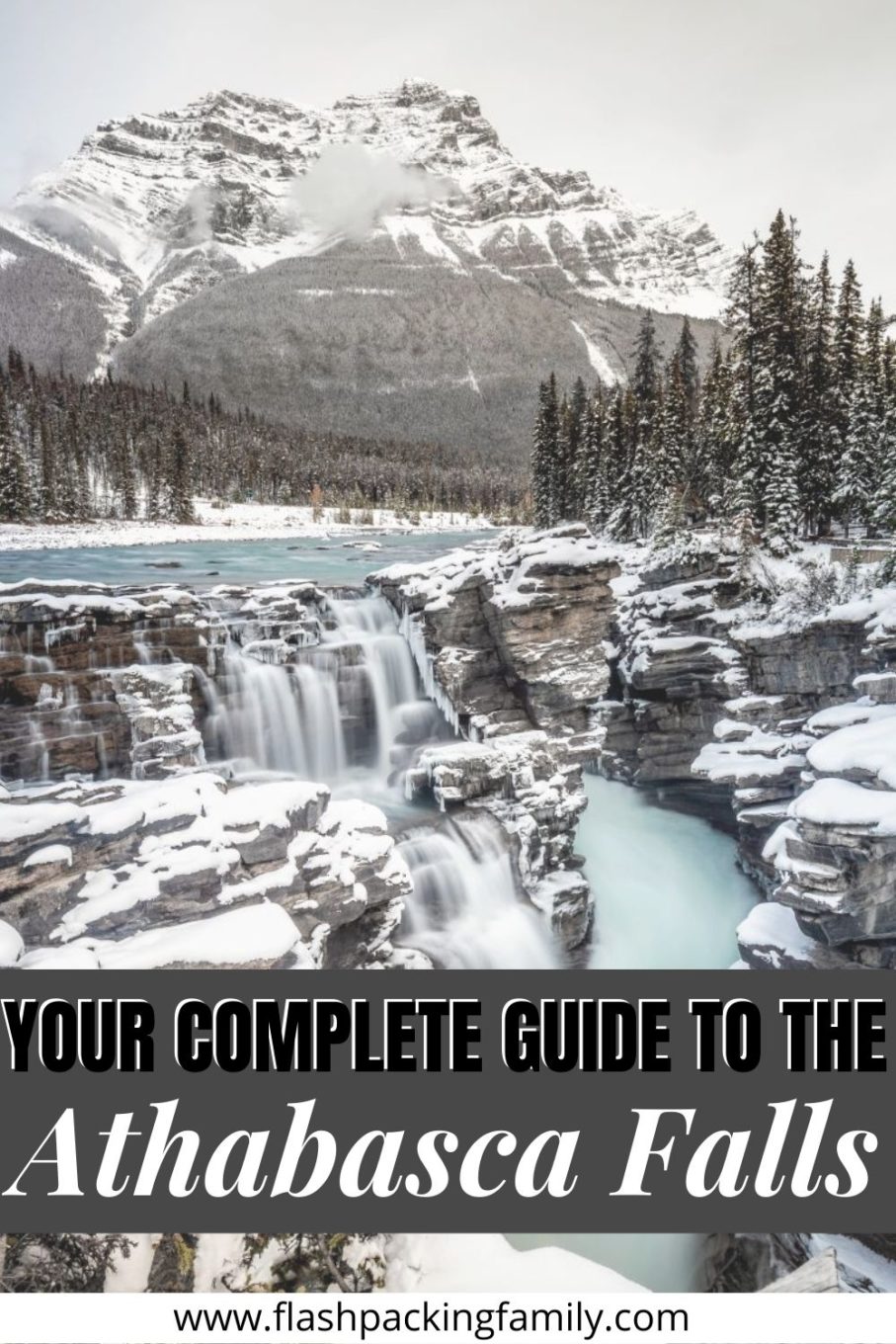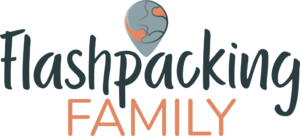Athabasca Falls: An Absolute Highlight of Jasper National Park
The Athabasca Falls are one of the most scenic waterfalls in Jasper National Park and a must-do on your Canadian Rockies road trip.
Whilst they aren’t the largest falls in Canada, they are certainly impressive, all the more so because they are surrounded by some of the most breathtaking scenery in the world.
Our guide to the Athabasca Falls gives you all the information you need to know to make the most of your visit but make sure to pick up a Jasper National Park travel guide too.
Where are the Athabasca Falls?
The Athabasca Falls are located in Jasper National Park, about 30 km south of Jasper in Alberta, Canada.
The falls are very easy to reach as they lie just off the main road (Highway 93) which is also known as the Icefields Parkway, one of the most scenic roads in the world.
The Icefields Parkway passes through Jasper National Park and down through Banff National Park. Take the turning off Highway 93 onto 93A which will take you to the (free) car park.
There is no hike involved from the car park to the falls. You can just follow a short path to the main viewing platform.
Map of Jasper National Park
Here are the main sights in Jasper National Park
Information about the Athabasca Falls
The Athabasca River flows down from the Columbia Icefield. The falls form when the river is forced through a narrow gorge and drops 23m (75.5ft). They are very easily accessed from the car park and you should allow around 30 minutes for your visit.
The Athabasca Falls are the most famous waterfalls in Jasper National Park and are usually included in most tour group itineraries. For this reason, they can get very busy. Your best bet to get uninterrupted views of the falls is to go early.
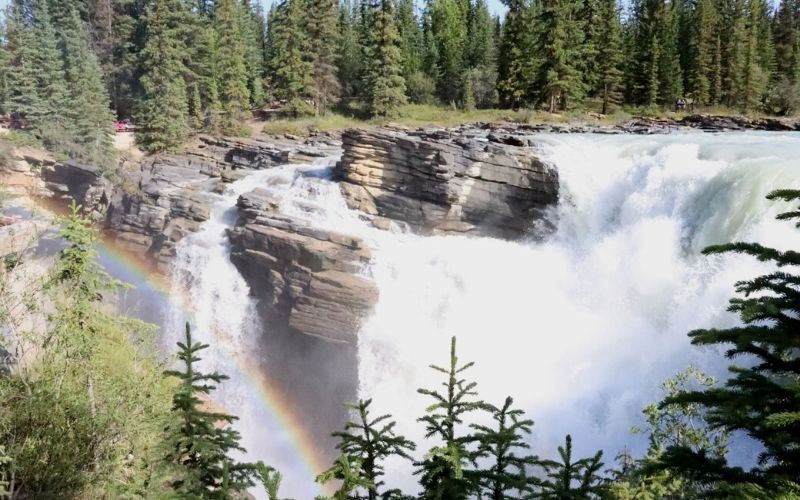
Athabasca Falls
When is the best time to visit the Athabasca Falls?
The best time to visit the Athabasca Falls is in Spring when the glacial waters are melting and you will experience the full force of the waterfall.
Although they are not particularly high or wide, they are considered the most powerful falls in Jasper National Park.
We were there in the middle of the summer in August and the falls were still an incredible sight. Unlike the waterfalls in Iceland like Seljalandsfoss where you can walk behind the waterfall and very wet, there is not so much spray here so you shouldn’t get wet.
In winter, parts of the falls ice over, forming incredible natural ice sculptures and it is also beautiful. Just be aware that parts of the path may be slippery with ice.
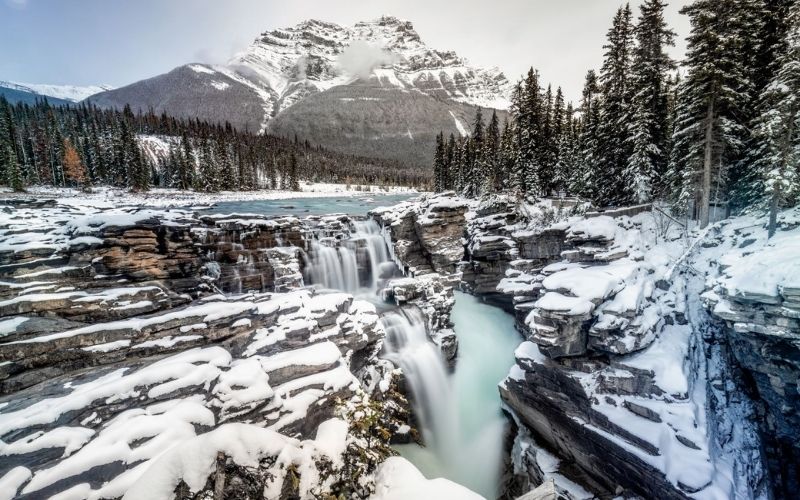
Athabasca Falls in winter
Parking at Athabasca Falls
There is a fairly large, car park at the falls, but this will get busy in the peak season (July and August).
As this is usually a relatively quick stop for a lot of people visiting the falls (due to the fact there is no hike involved), you can just sit and wait to find a parking spot if there isn’t one when you first arrive.
Facilities at Athabasca Falls
There are a number of viewing platforms and walkways which are strategically placed to enable you to get the best view of the falls.
There are toilets in the car park, but beware, they are basic! There are no other facilities here.
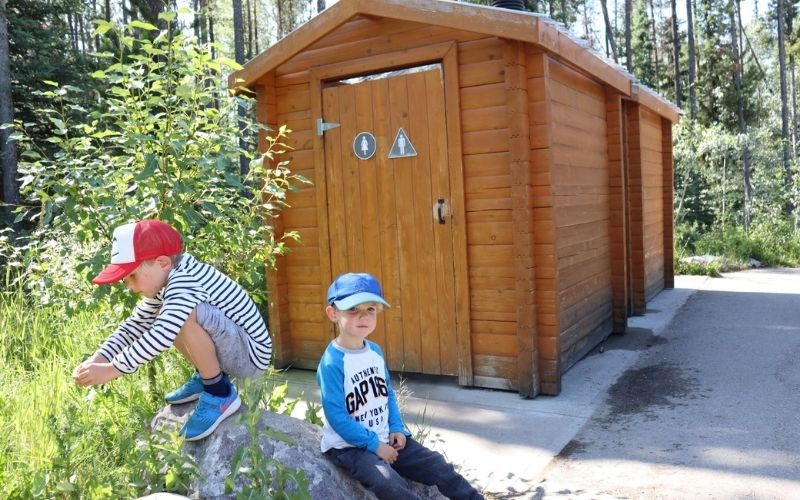
Toilets in the Athabasca Falls car park
Other sights to see in Jasper National Park
The natural beauty of Jasper National Park knows no bounds. There is so much to see and you could spend days here hiking to more remote places to get incredible views and have the place to yourself.
But if you are just passing through and want to see the main sights, here are our top recommendations:
Sunwupta Falls
If you are on a mission to see waterfalls in Jasper National Park, then you should make sure to see Sunwupta Falls too. These falls are just another 25 km (15 miles) further south than the Athabasca Falls. The are clearly signposted from the Highway and there is a designated car park.
There are two main parts to the falls, the Upper Falls and the Lower falls. The Upper Falls are easily accessed from the car park and has two viewing platforms including one which spans the width of the falls. To access the Lower Falls, you need to take a 1.3km (0.8mile) trail through the pine forest.
Athabasca Glacier
The Athabasca Glacier is one of the toes of the Columbia Icefield, the largest non-polar glacier in the world.
You can easily walk to the glacier, but you must not walk on the glacier yourself. There are dangerous crevices that have caused the death of tourists. If you want to go out onto the glacier, you need to take a guided tour.
The glacier is retreating at an alarming rate of 5 metres every year. There are signs along the path leading to the glacier to show you where it was at various times over the last century. The effect of global warming will really hit home when you see this.
There is a small car park close to the toe of the glacier, and if this is full, there is also parking along the gravel track leading to the car park.
Peyto Lake and Maligne Lake
There are some really beautiful lakes in Jasper National Park. Our favourite lakes are Peyto Lake (for its incredible turquoise blue colour) and Maligne Lake for the beauty of the surrounding peaks and glaciers. Spirit Island in Maligne Lake is a very popular photo spot.
Make sure you don’t miss out on the beautiful lakes in Banff National Park, the most famous of which is Lake Louise.
Mount Edith Cavell
Located in the Athabasca River and Astoria River valleys, Mount Edith Cavell is the most prominent peak in Alberta. The best views can be had by taking a narrow, winding track (Mount Edith Cavell Road) from the Icefields Parkway to Mount Edith Cavell Hostel.
Park across from the hostel and head along a track to the north of Cavell Lake where there is a bridge that crosses a small stream. From here, relax and enjoy the views.
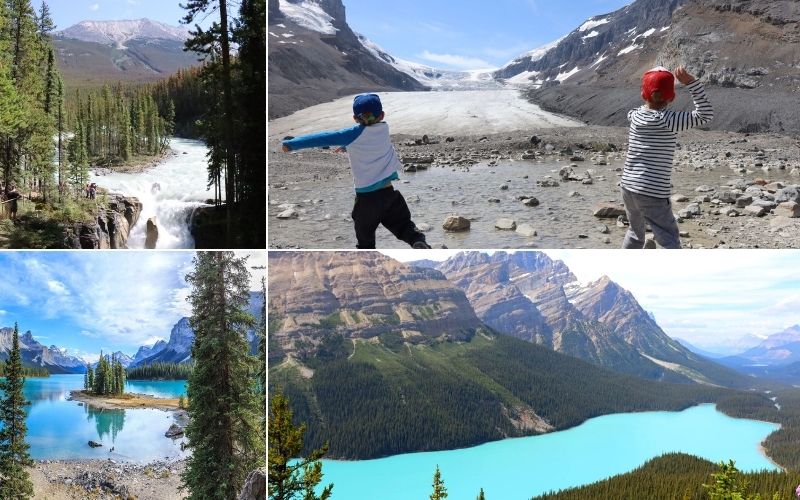
Top sights in Jasper National Park
Information about visiting Jasper National Park
- Jasper National Park is the largest national park in the Canadian Rockies at over 11,000 square kilometres and is part of UNESCO’s Canadian Rocky Mountain Parks World Heritage Site
- Jasper National Park neighbours the more famous Banff National Park. It is slightly less busy but is arguably more beautiful than Banff.
- Expect to see turquoise lakes, soaring mountain peaks and glaciers
- Wildlife native to Jasper National Park are: bears, elk, caribou, mountain goat, big horn sheep and moose among many others
- The park entrance fees are valid for 24 hours. You can buy your Canada Parks pass at the entrance gates. This should be displayed clearly. The fees are here, but in summary, Adults (18+) are $10.00, Youth (17 and under) are free. Family pass is $20.00
- If you are just passing through, you can do so without buying a park ticket, but you must not stop to get out and enjoy the sites.
- Be aware of wildlife on the roads. Stick to the recommended speed limits. If you see animals and want to take a closer look, make sure to pull off the road in a suitable spot. If bears are nearby, stay in your car and wind your windows up.
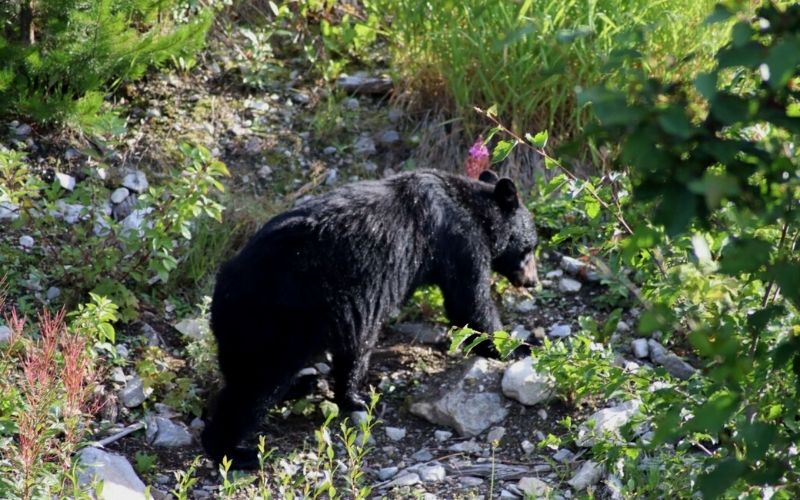
Bears in Jasper National Park
Accommodation near Athabasca Falls
There is only one place to stay right by Athabasca Falls and that is the HI – Athabasca Falls.
If you want to try camping near Athabasca Falls, the nearest campsite is Mount Kerkeslin Campground which is a lovely (but basic) campsite on the river’s edge. For more accommodation options in and around Jasper National Park, see Booking.com.
Did you know that Jasper National Park is not far from Calgary and the Canadian Badlands where you will find Drumheller, the dinosaur capital of the world? Why not add this in to your itinerary, including a visit to the Royal Tyrrell Museum, the best dinosaur museum in the world.

